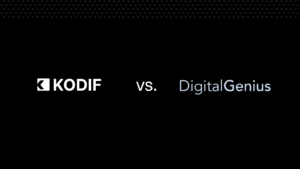At some point in time, “personalization” in customer experience got watered down to this:
“Hi [FirstName], we thought you’d love this…”
Congrats, you’ve successfully executed the mail merge equivalent of a Hallmark card.
Customers aren’t impressed by name tokens anymore. They know their name is in your database. They know you’re not personally writing them an email at 3:00 a.m. They also know that half the time, the thing you “thought they’d love” has nothing to do with their actual needs.
If that’s the extent of your personalization strategy, you’re not personalizing, you’re personal-labeling.
Real personalization is harder and way more interesting. It’s about designing every interaction so the customer thinks, “Wow, they really get me.”
And not in a creepy “how did you know my dog’s birthday?” way. In a “this saved me time, solved my problem, and actually felt relevant” way.
Here’s what that actually looks like.
1. Personalization is about context, not contact details
If knowing a customer’s name is your version of personalization, you’ve got bigger problems.
The real power is in context:
- Their purchase history (and the almosts: the cart abandons, the browsed-but-not-boughts)
- Their past support interactions (and whether they ended well or in a rage-quit)
- Their preferences for communication, tone, and even pacing
- Their current journey stage, whether they’re brand-new, a loyal VIP, or on the verge of cancelling
Without context, personalization is a shot in the dark. With context, it’s a laser-guided solution.
KODIF in action: Our AI doesn’t just pull a name, it pulls from CRMs, order management, and historical conversations, so every reply is rooted in what’s already happened, not a blank slate.
2. Real personalization happens in real time
Timing isn’t everything, but in personalization, it’s at least 70% of everything.
Think about it:
- An upgrade offer is welcome when a customer’s been happily using a product for months. It’s tone-deaf if they just filed a complaint.
- A customer needs to end their subscription, and you offer a relevant discount, product swap, pause, or offer based on their loyalty, the reason for cancellation, or any other details instead of just canceling no questions asked.
Personalization that’s built on last quarter’s data is just… stale. Real-time signals (changes in account status, browsing behavior, sentiment in a live chat, etc.) are where the fun happens.
KODIF in action: Our workflows adapt mid-conversation. If a customer changes their shipping address or product choice halfway through, AI adjusts instantly, no “let me restart the process for you” nonsense.
3. Personalization respects preferences (including the unsaid ones)
The easiest way to ruin personalization? Ignore someone’s boundaries.
A customer who prefers email over SMS doesn’t feel “seen” when they get six texts a week. Someone who likes short, bullet-point answers doesn’t enjoy scrolling through a three-paragraph “friendly” reply.
Great personalization tunes into both explicit preferences (opt-ins, channel selections) and implicit ones (how they interact with your brand, how quickly they respond, what they skip or ignore).
KODIF in action: AI that mirrors the style, tone, and cadence each customer naturally responds to, so a “just the facts” person never gets a wall of emoji, and a chatty customer never gets a cold, one-line reply.
4. Personalization is proactive, not reactive
Reactive personalization is like remembering someone’s birthday because Facebook told you. Proactive personalization is sending them exactly what they need before they ask.
The companies that get this right watch for signals that predict needs:
- Subscription usage dropping = check-in before they cancel
- Multiple support tickets about the same product = offer a replacement or alternative before frustration peaks
- Seasonal trends = anticipate what they’ll want next month, not last year
This isn’t just “surprise and delight”, it’s preemptive problem-solving that customers interpret as you paying attention.
KODIF in action: Our automation triggers reach out at the first sign of churn risk, shipping delays, or usage drop-off, so customers feel cared for, not managed.
5. Personalization scales without losing humanity
There’s an old myth in CX that you can have scale or personal touch, but not both. That might’ve been true in 2010. Today, with generative AI, it’s just lazy thinking.
When AI has access to the right data, real-time context, and brand voice guardrails, it can carry on nuanced, relevant conversations at scale, and know when to pull in a human.
The key isn’t in pretending automation is human. It’s in making automation so relevant and useful that customers don’t care if it’s human or not.
KODIF in action: Our AI handles repetitive work with high-context accuracy, then hands off only when it hits a truly human-required scenario, along with every bit of background the agent needs to finish the job seamlessly.
The bottom line
If your personalization strategy is just a first-name token, you’re not doing personalization, you’re doing cosmetics.
Real personalization is about knowing the story behind each customer’s name, acting on it in real time, respecting their preferences, anticipating their needs, and doing it all without dropping the human touch.
When it’s done right, customers don’t say, “Wow, that was so personalized.” They just say, “Wow, that was easy.” And that’s the only compliment that matters.









